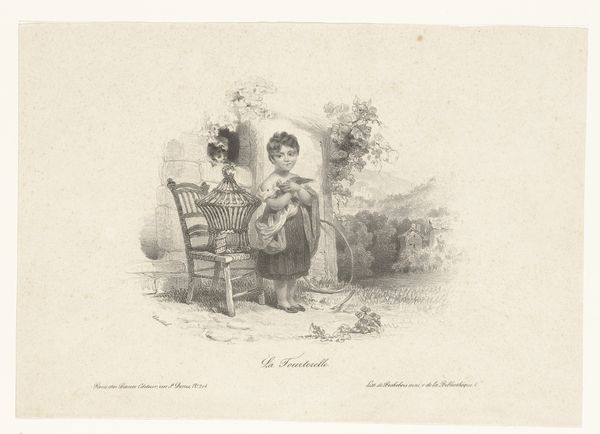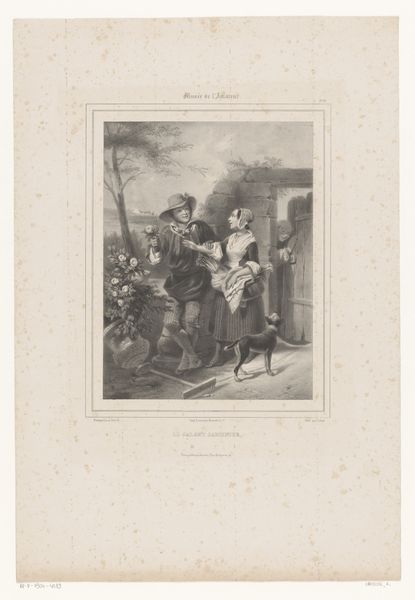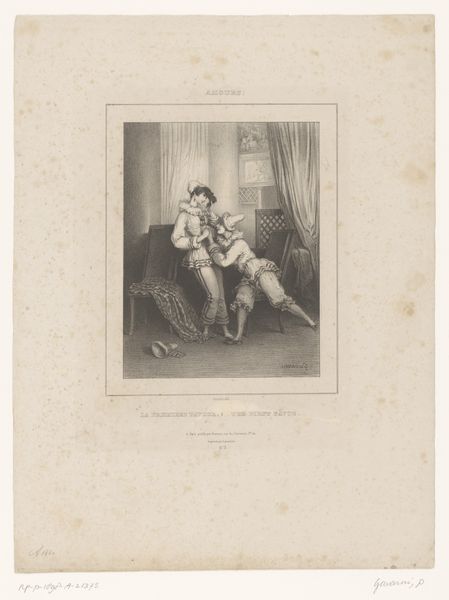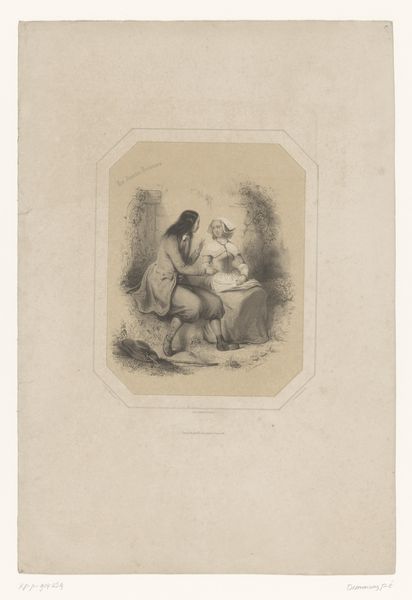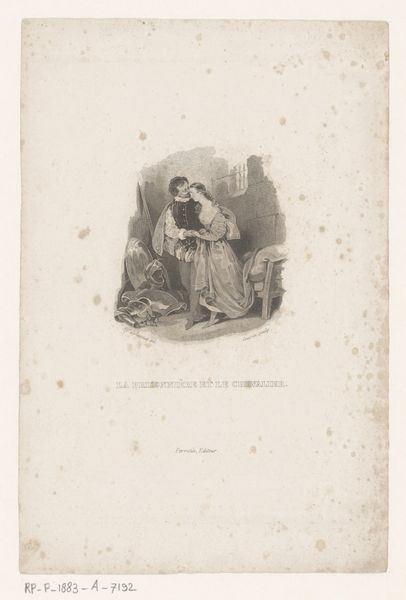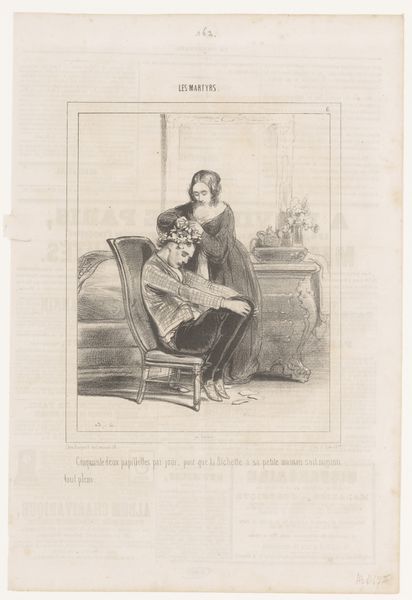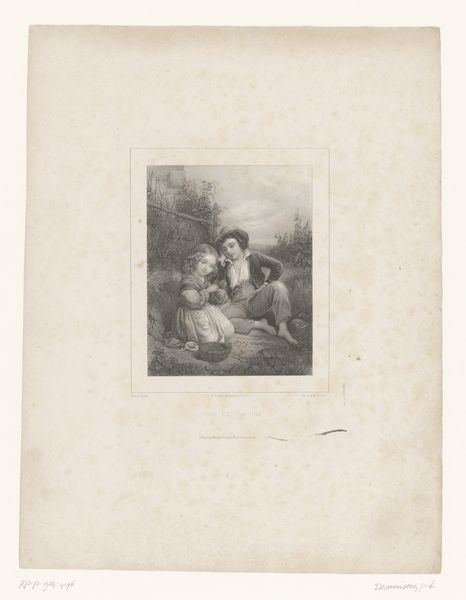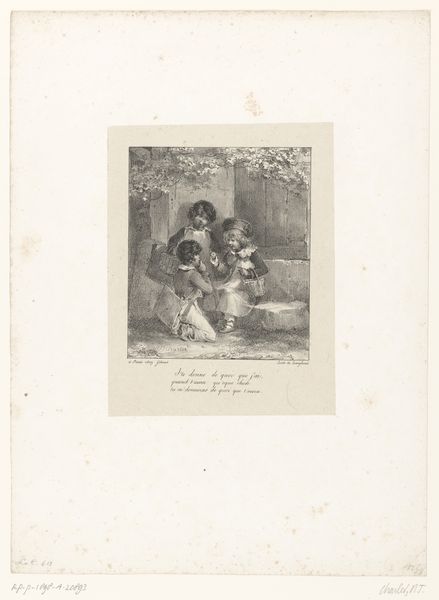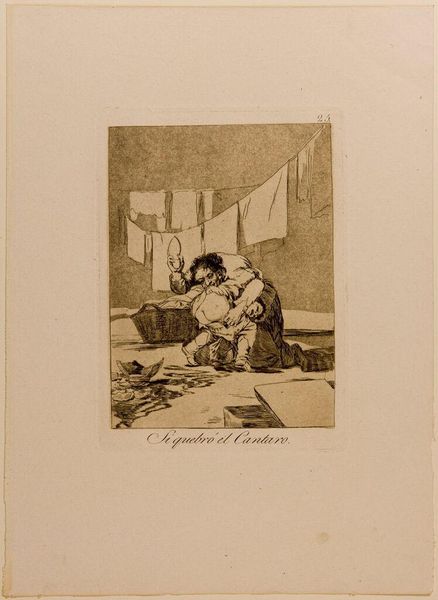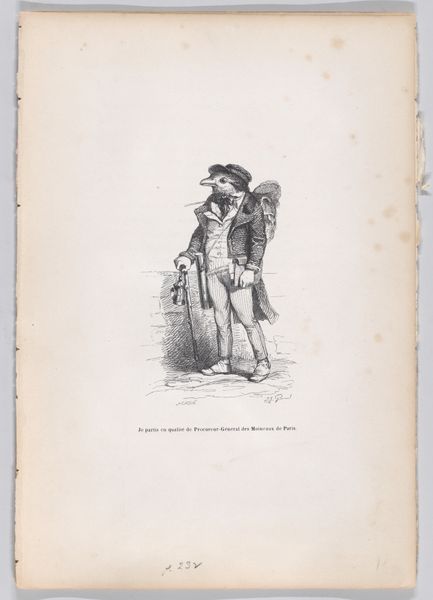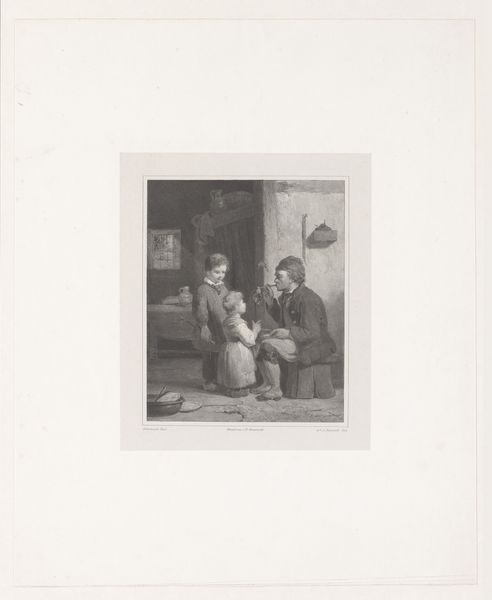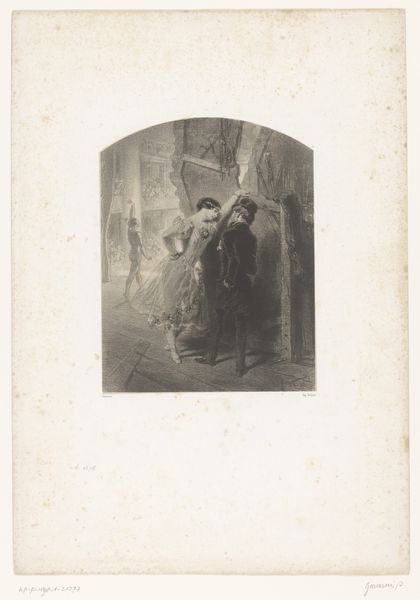
drawing, pencil
#
portrait
#
pencil drawn
#
drawing
#
light pencil work
#
narrative-art
#
pencil sketch
#
old engraving style
#
figuration
#
child
#
romanticism
#
pencil
#
pencil work
#
genre-painting
Dimensions: height 293 mm, width 223 mm
Copyright: Rijks Museum: Open Domain
Editor: Here we have Nicolas Toussaint Charlet’s pencil drawing, "Two Children at their Father's Grave," from 1832, currently housed in the Rijksmuseum. It’s… remarkably melancholic. The stark simplicity of the pencil work only amplifies the children’s apparent grief. What strikes you most about this piece? Curator: The pathos is certainly heightened by the socio-political context of the time. The post-Napoleonic era in France saw a surge in sentimental art, often focusing on the vulnerability of childhood and the fragility of life, partly fueled by the Revolution and subsequent wars. Consider how Charlet, who himself served in the military, channels this national mood. The graveyard setting reinforces the concept of public mourning. Does that make sense? Editor: Yes, it does. So the public’s mindset at the time was such that they would have identified deeply with this private grief, displayed in a… almost performative way? Curator: Precisely. Think about the wreaths, so neatly laid. And their poses. This isn't simply a snapshot of private sorrow; it's a carefully constructed image designed for public consumption and emotional resonance. It speaks to the idealized version of mourning circulating in the society and culture of the time, especially when disseminated through prints. To what extent do you think this image might reflect or shape those prevailing attitudes? Editor: It’s interesting to think about art both reflecting and reinforcing cultural norms. I guess I hadn't considered the 'performance' aspect so directly. Thank you. Curator: A good reminder that even seemingly simple images carry a complex historical weight. Perhaps a bit sentimental for today, but historically very revealing.
Comments
No comments
Be the first to comment and join the conversation on the ultimate creative platform.
